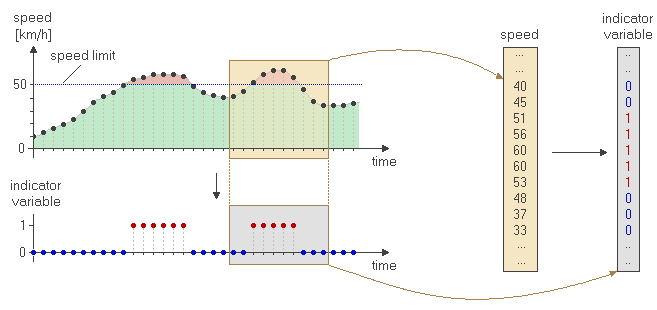| Fundamentals of Statistics contains material of various lectures and courses of H. Lohninger on statistics, data analysis and chemometrics......click here for more. |

|

Home  Basic Concepts Basic Concepts  Indicator Variable Indicator Variable |
|||||
Indicator VariableAn indicator variable is a binary variable (values 0 and 1, or -1 and +1) which tells us whether an object exhibits a particular property or not. Indicator variables can be either collected directly (e.g. the gender of a person) or calculated from other variables. In the case of calculating indicator variables we have to distinguish two scenarios: Dichotomization of a continuous variable: In some experiments a continuous variable is measured at first, however the concecutive analysis requires only to know whether the measured value has exceeded a threshold or has fallen below a limit. This means that we are interested only in two states (limit exceeded or not). The resulting variable is a dichotomous or binary one. The threshold for the dichotomization is clearly determined by the particular problem, thus it is conceivable to extract more than one indicator variable from a measured continuous variable.
Breaking down nominal and ordinal variables: If a variable contains the description of several states or qualitative properties, this variable will be useless for establishing statistical models, because most models require the explanatory variables to be at the interval or ratio level of measurement. A remedy in such cases is to split the variable into an appropriate number of indicator variables which contain either 0 or 1 depending on the occurrence of a particular state. In general, a qualitative variable showing n levels of measurement can be represented by n-1 binary indicator variables (however, in most practical circumstances n indicator variables are used).
|
|||||
Home  Basic Concepts Basic Concepts  Indicator Variable Indicator Variable |
|||||



